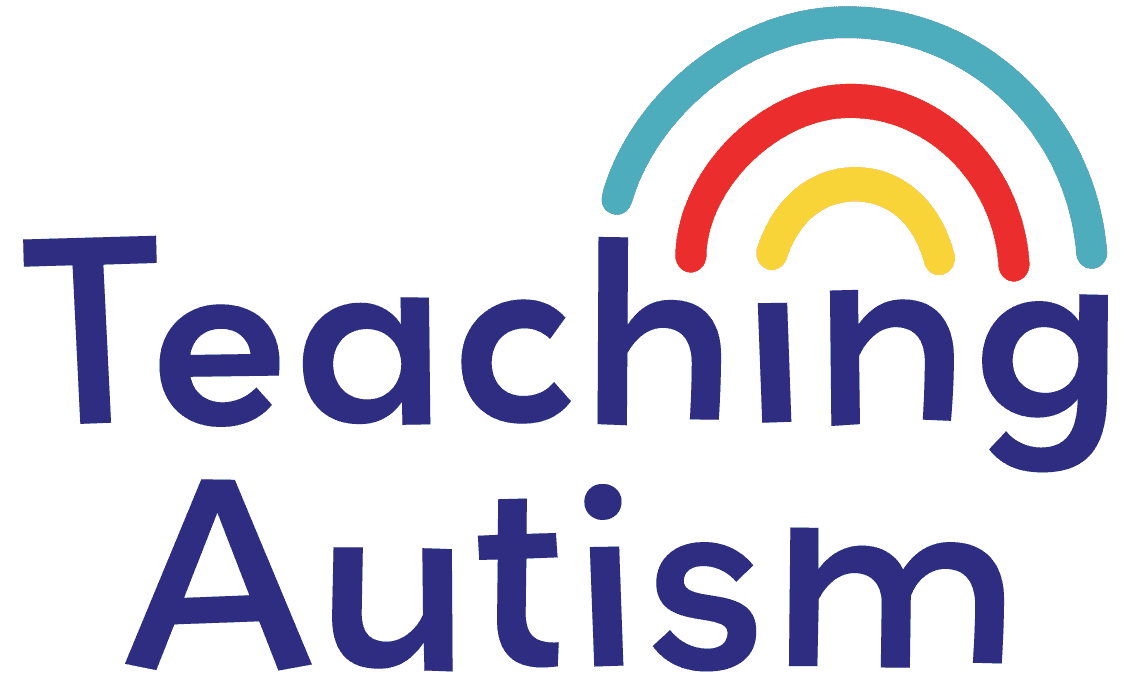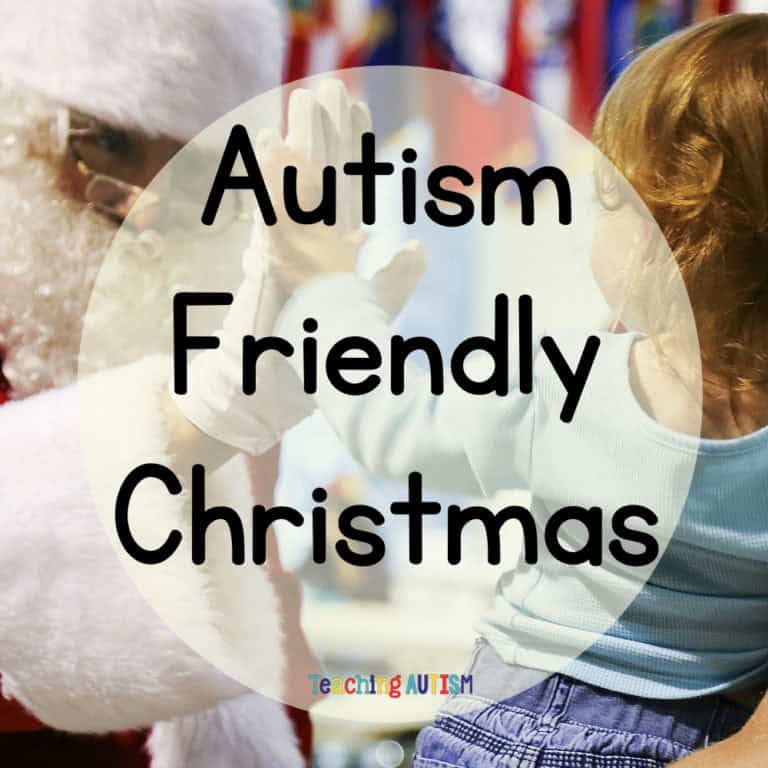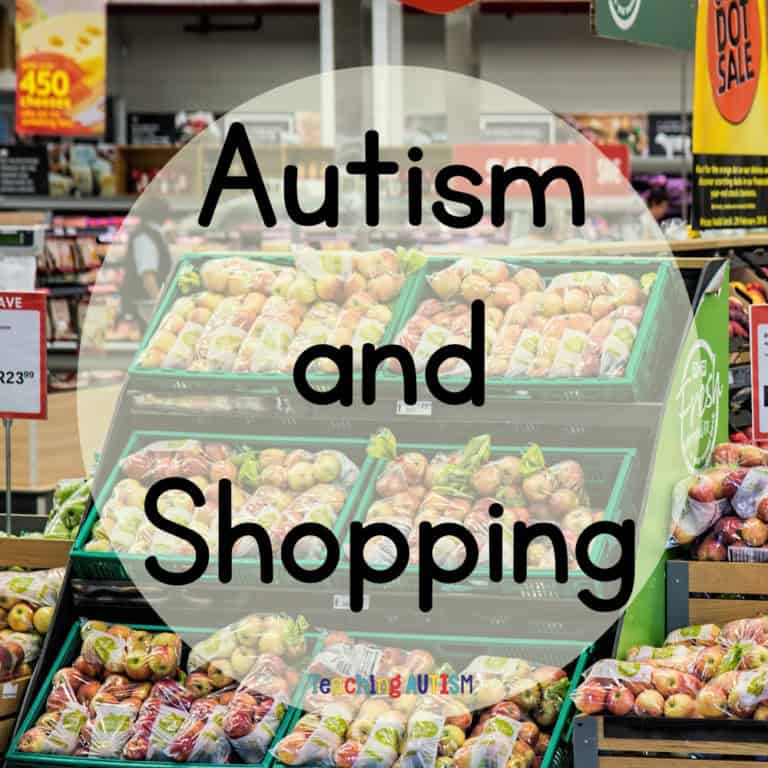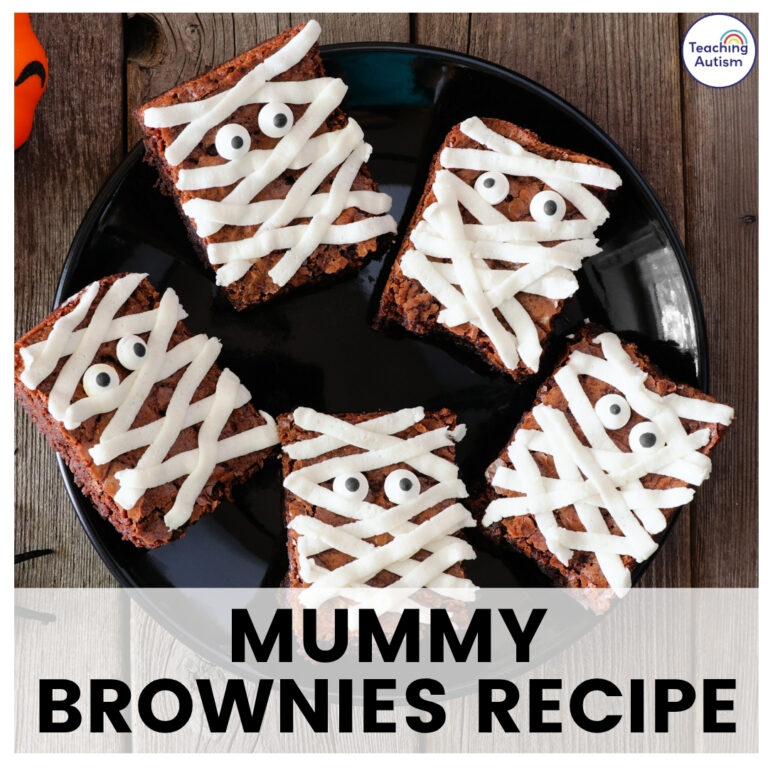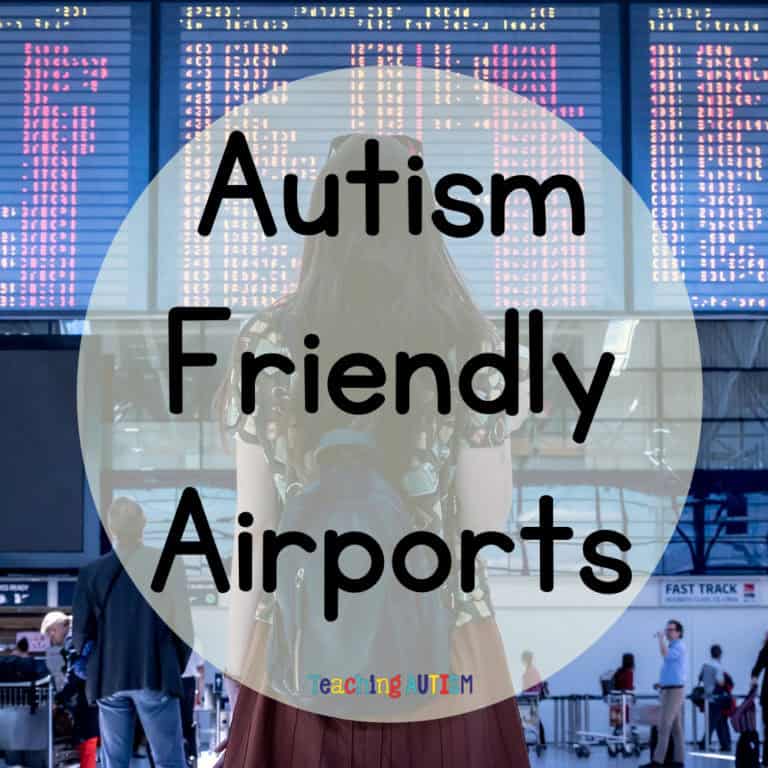Halloween and Autism
Halloween is becoming a bigger event each and every year. From parties, to discos and trick-or-treating, it can be a child’s favourite time of year – or their biggest nightmare. Many of our families worry about Halloween, especially when it’s one of their child’s first Halloween events. We worry Will they cope? Or will it be too much for them? All we can say, is really you won’t know until you give it a go. However that’s not to say that you can’t adapt it and prepare you child for the event. Preparation is key as it’ll help to lessen the surprise of what happens on Halloween. Today, I’m going to share with you my 10 tips to celebrate Halloween with your child with autism.
1.Trick or Treating
Trick-or-treating is a popular part of Halloween, and you don’t have to stop your child from taking part. You can adapt trick-or-treating to make it more suitable for your child. You can use trick-or-treating cards that they can hand to neighbours/doors that they knock. These will explain about your child having autism. We have a set here that you can download for free.
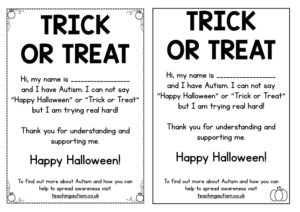
2. Costumes
So, we all know that sensory plays a huge part in the lives of our children with autism, and costumes can be a nightmare. Many children with autism LOVE to dress up – we have some children who are forever in the dressing up box and wanting to get dressed. Then, we have children who aren’t too bothered, but get fed up quite quickly, but then we have children who just physically can’t cope with a costume – the feel of it and so much more. Try reading a social story, trying on costumes before hand and talk to your child (if possible) about dressing up. If they don’t want to dress up, think of other ways that they can take part. A Halloween themed t-shirt? You can also look at costumes that go over your child’s clothing so that they won’t feel it as much, like wings or capes.
3. Autism Community Group Discos
We have a few local autism groups in our community that put together Halloween ‘discos’ which are more laid back and relaxing for our children. Their music is usually softer and quieter, they have a range of sensory activities on hand, dressing up boxes and masks for children to use, and a more suitable atmosphere for our children. Plus, it gives you the chance to meet with other autism parents in your community. Meeting other parents is so important, because it helps to give you a support base. You can learn so much from other families too!
4. Small Parties
If you want to start introducing your child to Halloween parties, start small and know your child. Invite close family and friends to start with – or even just keep it as yourselves and decorate the house. Then, the next year invite another family member or two, the next year introduce some music etc. Involve your child in as much of the decision making as possible, and if you want to decorate the house, involve your child there too. You can make Halloween decorations together.
5. Opting out of Trick-or-Treating
If visitors upset your child and may cause a meltdown, consider having a small sign outside the house that politely asks for no trick or treaters. If you do want to still have candy available, leave a small cauldron of candy outside the front door – or have a member of family sit outside with it – and a small sign explaining to take one candy each and why they’ve been left. We always try to use every opportunity to spread autism awareness around us and this is another great opportunity! I’ve made this poster that you are welcome to download and have on display with or without your treats.
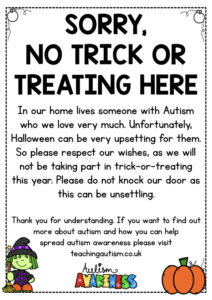
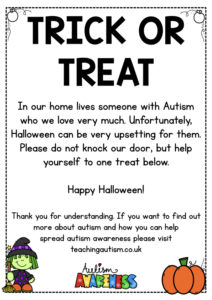
6. Books
Books are a great, visual resource that we have access to. There are loads of lovely books out there on Halloween and these are great to read to your child to get them ready for Halloween. You can also look at books that cover the different parts of Halloween so your child can listen to, see and even read to themselves about trick-or-treating, Halloween parties etc.
7. Sensory Sessions
We always try and have sensory sessions that are tailored to current themes and holidays and Halloween is one of the best ones. You can make pumpkin slime to touch, taste pumpkins or Halloween themed foods – cakes, biscuits etc. Even just walking up and down a Halloween aisle in a shop can fill you with great ideas to use.
8. Carving a Pumpkin
Carving a pumpkin is such a fun, creative activity and you can make it however you want. Your child can get involved and pull out all the seeds from inside and help you design the pumpkin – or they can watch. We love giving our children mini pumpkins and have them draw on them with glow in the dark pens. Then, when we switch the lights off, they glow in the dark!
9. Daytime Activities
If your child is scared of the dark, consider taking part in activities in the daytime when it’s light. You could organise with your neighbours to do some earlier trick-or-treating so that it’s still light for your child.
10. Know your child’s limits
This is the most important. As we so often discuss, each child with autism is different, and the most important part of anything we do with them, is to know them personally. Your child may love Halloween or they may hate it. Don’t push them too far, but play to their strengths and tailor Halloween to make it something enjoyable for them, and you’ll start to see progress in the right direction.
